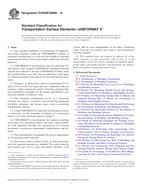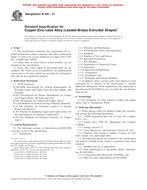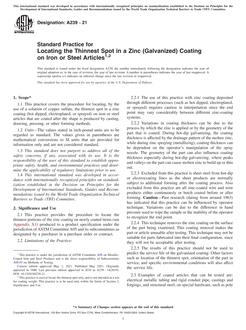1.1 This test method covers the determination of flexural properties of continuous fiber-reinforced ceramic composites in the form of rectangular bars formed directly or cut from sheets, plates, or molded shapes. Three test geometries are described as follows:
1.1.1 Test Geometry I – A three-point loading system utilizing center loading on a simply supported beam.
1.1.2 Test Geometry IIA – A four-point loading system utilizing two load points equally spaced from their adjacent support points with a distance between load points of one half of the support span.
1.1.3 Test Geometry IIB – A four-point loading system utilizing two load points equally spaced from their adjacent support points with a distance between load points of one third of the support span.
1.2 This test method applies primarily to all advanced ceramic matrix composites with continuous fiber reinforcement: uni-directional (1-D), bi-directional (2-D), tri-directional (3-D), and other continuous fiber architectures. In addition, this test method may also be used with glass (amorphous) matrix composites with continuous fiber reinforcement. However, flexural strength cannot be determined for those materials that do not break or fail by tension or compression in the outer fibers. This test method does not directly address discontinuous fiber-reinforced, whisker-reinforced, or particulate-reinforced ceramics. Those types of ceramic matrix composites are better tested in flexure using Test Methods C 1161 and C 1211.
1.3 Tests can be performed at ambient temperatures or at elevated temperatures. At elevated temperatures, a suitable furnace is necessary for heating and holding the specimens at the desired testing temperatures.
1.4 This test method includes the following:
| Section | |
| Scope | 1 |
| Referenced Documents | 2 |
| Terminology | 3 |
| Summary of Test Method | 4 |
| Significance and Use | 5 |
| Interferences | 6 |
| Apparatus | 7 |
| Precautionary Statement | 8 |
| Specimens | 9 |
| Procedures | 10 |
| Calculation of Results | 11 |
| Report | 12 |
| Precision and Bias | 13 |
| Keywords | 14 |
| References | |
| CFCC Surface Condition and Finishing | A1 |
| Conditions and Issues in Hot Loading of Specimens into Furnaces | A2 |
| Toe Compensation on Stress-Strain Curves | A3 |
| Corrections for Thermal Expansion in Flexural Equations | A4 |
| Example of Test Report | X1 |
1.5 The values stated in SI units are to be regarded as the standard per Practice E 380.
1.6 This standard does not purport to address all of the safety concerns, if any, associated with its use. It is the responsibility of the user of this standard to establish appropriate safety and health practices and determine the applicability of regulatory limitations prior to use.
Product Details
- Published:
- 04/10/2000
- Number of Pages:
- 19
- File Size:
- 1 file , 280 KB


